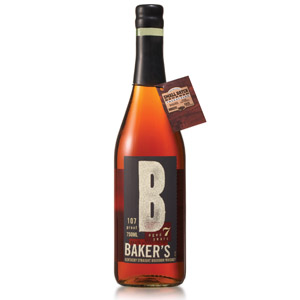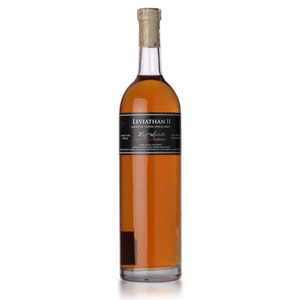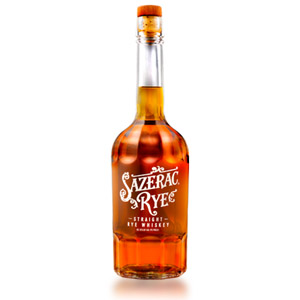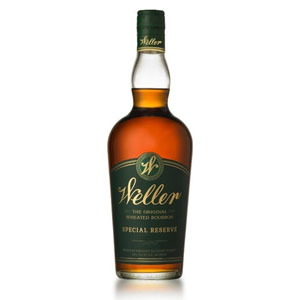I have not, historically, been much of a fan of Jim Beam. Something about the house character jars my sensibilities, and I seem to detect it in every inexpensive release they do. Older Beam (Knob Creek, Baker’s, Booker’s, etc.) doesn’t seem to have that problem.
It was thus that I took David Driscoll’s effusive shilling of Beam’s new limited “Old Tub” release with a grain of salt. I mean, he’s not always right. (Spoiler: He is always right.) Still, $19 wasn’t too much to throw away on a bottle of bourbon, I figured, and it could always become cocktails.
Old Tub is what Jim Beam used to be called a century ago when it was first sold in bottled form. The name changed to “Jim Beam” in 1943 and the previous brand name was relegated to a Kentucky-only low-volume brand. Now, in 2020, Beam has released a limited edition renewal of the Old Tub brand. It’s still bottled-in-bond, and in an effort to lend the release some authenticity the whiskey is not chill-filtered and also not charcoal filtered. Honestly, I don’t know why in 2020 any whisky company still filters its whisky, but kudos to Beam for recognizing that maybe keeping some flavor in their young whiskey might be a good idea. Before you ask, the liquid is screened to prevent chunks of oak and charcoal from ending up in the bottle.
The whiskey is a Kentucky straight bourbon and is 4 to 5 years old. So, 4 years old. Due to the Bonded requirements it is bottled at 50% ABV and was distilled in a single distilling season and aged in a government-bonded warehouse. The bourbon is “limited” but you can bet your breeches if it takes off Beam will make more.
Nose: Cork. Chewy chocolate nougat. Caramel popcorn. Circus peanuts (banana-flavored candy). Peanut butter. It smells – God help me – like a turn-of-the-century saloon with peanut shells on the floor.
Palate: Robust, heavy body, almost chewy. Tongue burn is as-expected for 100 proof. Most of the aroma compounds continue onto the palate. It actually tastes like it smells. There’s also some cherry and cinnamon and a bit of charcoal.
Finish: On the short side. A little menthol picks up on the finish, and it fades without much change, but also without any bitterness.
With Water: A few drops of water don’t seem to change things much, aside from maybe adding a touch of corn-syrup sweetness to the aroma and palate. I actually prefer it without the water, but it’s cheap enough to experiment with. See what ice does, too – see if you can detect the visual “unfiltered” difference when it becomes chilled.
Overall: Something unique in bourbon? What?! Seriously, I expected this to be reconstituted Jim Beam with a soupçon of marketing, but no! I don’t know if it’s the lack of filtration or the barrel selection or what, but this is not only downright tasty bourbon, it’s also got an honest-to-God antique character. Tasting this, I actually feel like someone from 1920 knocking back a glass in a saloon after a hard day on the trail, or whatever. This gives me the same sense of history that some older single malt scotches do, when they smell like barnyard/hay.
This is also cheap enough that I can call it a “Must Have” without any regret. If you like bourbon, you’ll like this even if Jim Beam isn’t your cup of tea. Also, I don’t know if this is really a limited release or not, but you can probably assume that even if it becomes popular and Beam adds it to the regular lineup, they’ll have to cut some corners. Future batches will probably not be quite this good, so buy some now if you’re interested.









I get it for 17.99 at spec’s in San Antonio . I think it is a great bottle for the money I get basically what you get except once when not thinking about it I got GOOD and Plenty’s plain as day then never got it again
As a bourbon drinker partial to Beam’s style (I realize not everyone is), I was pleased to see this positive review. I found not just cinnamon but also loads of pepper in the finish — really different. And at $19, it’s a steal. But people figured that out. At my local Binny’s Beverage Depot (Arlington Heights, Illinois), customers were limited to two bottles — last summer. Now, it’s pretty much gone from the shelves here. So act quickly. Grab a couple.
This may be the dumbest question I’ve ever asked on your blog, but here goes: where does the cherry note come from in a bourbon? I can understand these things on an intellectual level: the corn syrup/cola notes originate from the corn in the mashbill; the clove/cinnamon/baking spices from the rye; the bread/cake notes from the wheat; the wood/tannin/vanilla notes from the barrel; and the plastic/acetone notes from perhaps a young distillate. But where does the cherry come from? I know these flavors aren’t all exclusively from a one source, and are perhaps a combination of elements in the distillation/maturation process. But I’m scratching my head on cherry, which is a note I undeniably get on many, many bourbons, yet have never really gotten in, say, a single malt (which makes me think it can be attributed to the corn or rye, or even the yeast in combination with these?). Thanks!
A good question, and not one I have a satisfying answer for. Fruit aromas and flavors in spirits are often caused by esters. Esters, though, can come from chemical reactions with metals in the still, as well as from fermentation byproducts AND chemical reactions with oak. I’ve never encountered cherry notes in American single malts that age in new oak casks, so it’s possible that the cherry note is either a byproduct of column stills or corn (or both). I’ve also read that the note comes from the specific strain of yeast that is widely used in the bourbon industry, which would explain why it seems to be a common element between major bourbon brands. Or, more exactly, that the combination of new oak aging with byproducts from the most-commonly-used yeast cause the cherry esters. Fun to think about.
Thanks! Your detailed responses are why I come to your website to learn about Whisky, especially the Comments section. (The reason I asked about cherry is because I’m creating my own flavor wheel for each type of Whisky, and I couldn’t figure out where to put cherry on my Bourbon Wheel—until now.) Based on your comments above, I have to go back and try Nikka Coffey Grain, which might prove your theory that the cherry note in bourbon comes from the combination of new oak aging with byproducts from the commonly used yeast strain. Nikka Coffey Grain, which David Driscoll called “Japanese Bourbon,” is a majority American corn mashbill (same as bourbon), distilled on a column still (same as most bourbons), and aged in refill bourbon casks. Yet I don’t recall a cherry note, despite it being a dessert bomb (A bit too pricey for my taste, however). Fun to think about, for sure. Thanks!